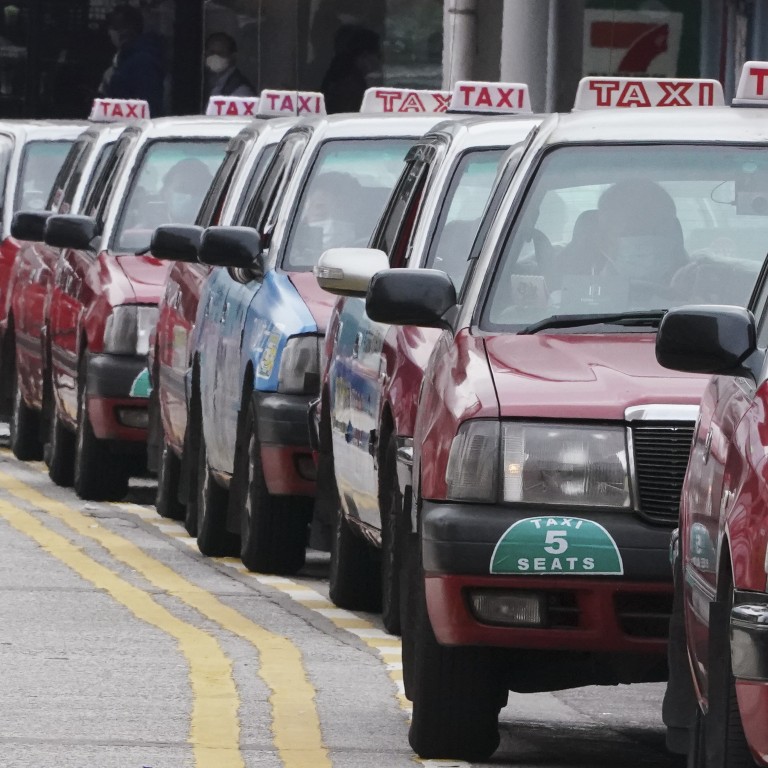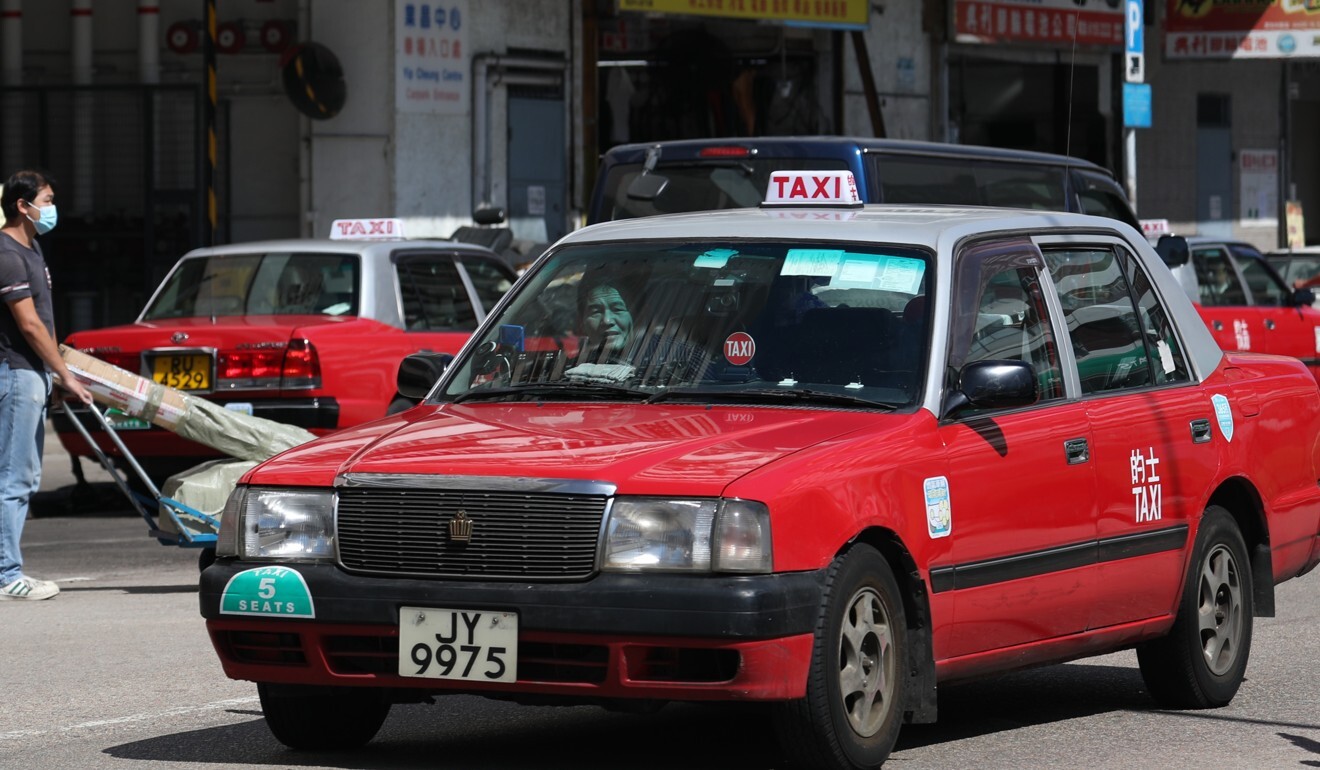
Hong Kong insurers want devices in taxis to monitor bad driving, slash accident rates, before premiums can come down
- Database of traffic offences can help to weed out bad drivers, insurance body says
- Operators willing to install more safety devices in vehicles, but call for government subsidies
Hong Kong’s taxi operators will have more bargaining power to deal with skyrocketing premiums if they fix drivers’ bad habits and slash the number of road accidents, the head of a leading insurance industry body has said.
Selina Lau Pui-ling, CEO of the Hong Kong Federation of Insurers, suggested installing electronic devices in taxis to track cabbies’ behaviour on the road, and having a central database of their traffic offences to weed out the bad ones.
“To tackle the soaring premiums for taxis, everybody should take a step to address this issue,” she told the Post. “The government should enact a law requiring taxis to be compulsorily equipped with safety devices and provide the operators some subsidies to do so.”

Unhappy operators have been pressing the government to either allow them to charge passengers an extra HK$6 per trip as an insurance surcharge, or approve their request to raise fares by more than 20 per cent.
While they have cried foul at rising premiums, insurers put the blame on the high accident rate of taxis and increasingly exorbitant damages sought by claimants.
The number of accidents involving taxis rose from 3,916 in 2018 to 4,198 in 2019, before declining to 3,408 last year, during the coronavirus pandemic, according to official data. The contributory factors were mostly driver related, including inattentive driving, tailgating and losing control of the vehicle.
“There really are some problems with the driving attitude of taxi drivers,” Lau said.
She pointed out that many of Hong Kong’s 18,163 taxis were also old – about 27 per cent of them are more than 13 years old – and operators often did not know who was behind the wheel.
“Some taxis are more than 20 years old but are still on the road, while many taxi owners don’t know to whom their vehicles are rented,” she said.
‘Record-high’ insurance premium of HK$150,000 for Hong Kong taxi
One way to reduce the number of accidents involving taxis, according to Lau, was for the government to compel operators to install devices such as speed limiters and electronic data recorders like the “black boxes” on the city’s minibuses.
“Some safety devices can monitor cabbies’ bad driving behaviour, such as slamming on the brakes, switching or cutting lanes recklessly, or making sharp turns. Through these devices we can also verify who is behind the wheel,” she said.
She said minibus accident rates and damages claims fell after the vehicles were equipped with speed limiters in 2012, and their insurance premiums had become stable too.
The number of accidents involving minibuses fell from 1,142 in 2011 to 890 in 2019, and 658 last year, amid the pandemic. Average premiums declined by more than 7 per cent to about HK$51,000 last year.

01:29
Learn these Cantonese phrases on your next Hong Kong taxi ride to avoid being ripped off
Lau said having a central database of traffic offence records would let insurers assess vehicle risks better, and also help taxi operators select better drivers.
With safety devices in cabs and a database of offenders, she added “there will be room to adjust the deductible fees or premiums”.
Lau said taxi insurance was unappealing to the industry, and fewer insurers were keen to provide this coverage.
Insurance Authority data showed that for 10 of the 15 years up until 2019, the taxi insurance business accumulated total underwriting losses of HK$323 million. In 2019 alone, these losses hit HK$119 million.
Lau pointed out that the damages sought by claimants leapt from HK$288 million in 2016 to HK$459 million (US$59.1 million) last year, a 60 per cent increase.
“The problem is, taxi insurance is not a profit-making business. Many insurers have quit the taxi sector,” she said. “In the past we had about 10 insurers, but now the number has dwindled to about five. Fewer and fewer insurers are willing to join this sector.”
Hong Kong taxi operators seek approval for fleet of premium six-seater cabs
‘Insurers must honour promises’
Taxi operators countered that they had been trying to improve the accident record, but insurers had not lived up to their promise to reduce premiums for taxis equipped with dash cameras.
They also blamed excessive demands for damages on rampant insurance fraud, citing staged incidents and exaggerated claims of injuries.
“We have more than 60 per cent of taxis installed with dash cameras, but the insurance sector has never reduced the premiums or deductibles,” Ng Kwan-sing, vice-chairman of Hong Kong Taxi Council, said.
The council had been trying out several safety devices, he said, but the taxi sector should not bear the brunt of responsibility for the soaring premiums.
“The taxi industry is determined to improve its service but we need the government’s encouragement and recognition of our efforts,” he said, adding that officials should take the lead by providing subsidies for taxis to install the safety systems.

Chau Kwok-keung, chairman of the Hong Kong Taxi and Public Light Bus Association, said the industry was willing to install the safety devices, but insurers needed to “honour their promise of reducing premiums or deductibles”.
As for having a central database of errant cabbies, he worried that would put off new workers and drive out those already behind the wheel at a time when the industry was already understaffed.
A Transport and Housing Bureau spokeswoman said that in recent years, the Transport Department had approved a number of driver assistance systems to be installed in vehicles, such as alerting drivers to imminent collisions, keeping in lane and warning of blind spots ahead, as well as electronic stability control and emergency braking systems.
She said the department would continue to liaise with vehicle manufacturers and safety device manufacturers on the latest technology available.
“If vehicle manufacturers are interested in introducing driver assistance systems in taxis, the government is willing to explore the application of relevant systems with the taxi trade and manufacturers to ascertain the technical feasibility of installing such systems in taxis,” the spokeswoman said.

